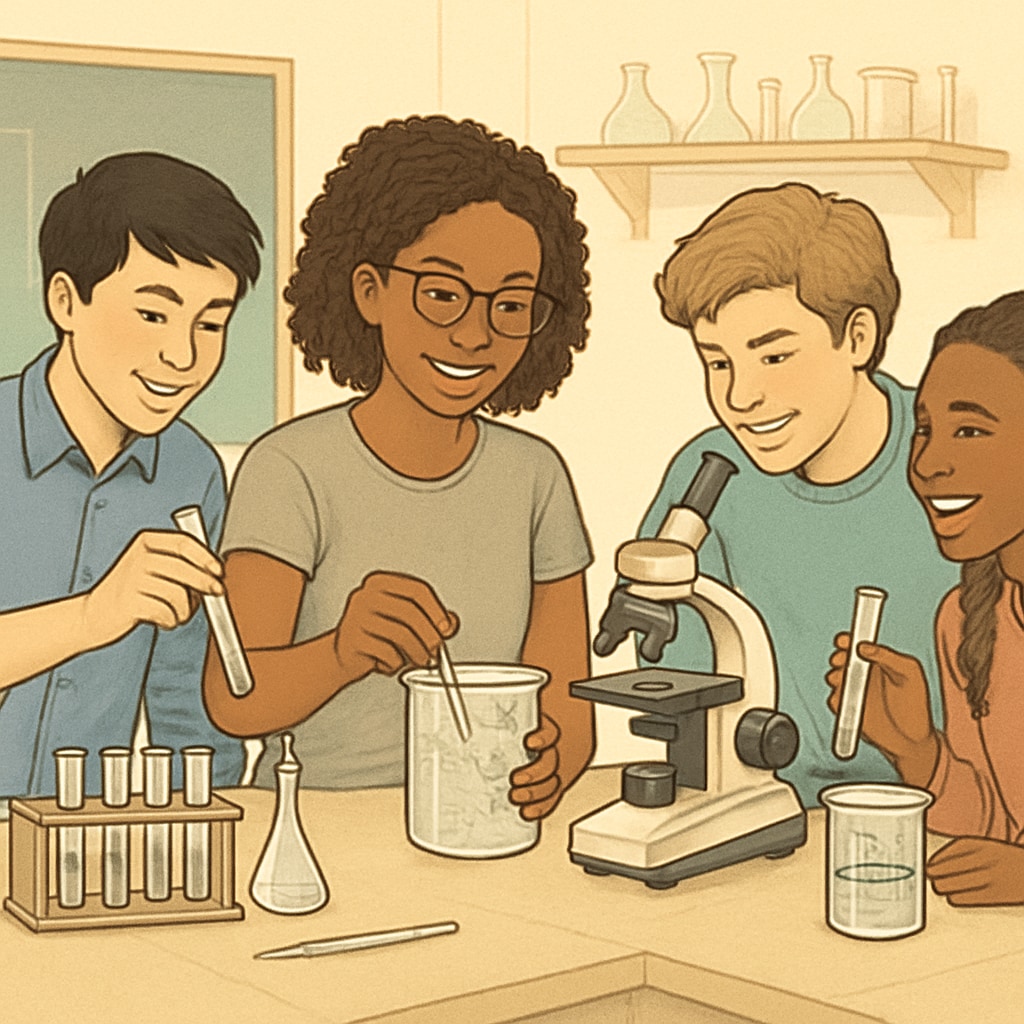In high school science classrooms, where approximately half of the students may be English Language Learners (ELLs), implementing effective strategies to bridge the gap between language and content learning is critical. Educators face the dual challenge of supporting ELLs in mastering scientific concepts while simultaneously developing their English proficiency. This article delves into practical approaches for differentiated instruction and resource allocation to foster an inclusive and effective learning environment.

Understanding the Unique Needs of ELLs in Science Classrooms
To support ELLs effectively, educators must first understand their unique challenges. Science instruction often involves complex vocabulary, abstract concepts, and technical processes. For ELLs, these factors can be compounded by limited English proficiency, making it harder to grasp both the language and the subject matter. As a result, teachers must adapt their strategies to ensure that language barriers do not impede learning.
For example, incorporating visual aids and hands-on activities can make abstract scientific concepts more accessible. Additionally, providing bilingual glossaries or translating key terms can help students bridge their understanding. According to the Wikipedia page on English Language Learners, scaffolding techniques such as sentence starters and graphic organizers are particularly effective in supporting language and content acquisition.
Practical Differentiation Strategies for Science Instruction
Differentiated instruction is essential for accommodating various proficiency levels in a classroom with ELLs. Below are some practical strategies for differentiation:
- Use tiered assignments: Provide tasks with varying complexity based on students’ language proficiency levels. For example, advanced learners may write a lab report, while beginners could focus on labeling diagrams or answering multiple-choice questions.
- Incorporate multimedia resources: Leverage videos, animations, and interactive simulations to visually demonstrate scientific phenomena. These resources help ELLs understand concepts without relying solely on text-based explanations.
- Group work and peer support: Organize collaborative learning activities where ELLs can work alongside native English speakers. Peer interactions encourage language practice while fostering teamwork and deeper understanding.
As highlighted by Britannica’s overview of education strategies, differentiation promotes inclusivity by addressing the diverse needs of learners in multilingual classrooms.

Integrating Language and Science Learning
One of the most effective ways to support ELLs in science classrooms is to integrate language development into content teaching. Here are some strategies to achieve this:
- Focus on academic vocabulary: Teach subject-specific terms explicitly, using visuals and context-based examples. Reinforcing these terms through repetition and practice ensures they become part of students’ active vocabulary.
- Encourage writing and speaking: Incorporate activities such as oral presentations, science journals, and debates. These opportunities allow ELLs to practice their English skills in meaningful ways while engaging with scientific content.
- Provide sentence frames: Offer structured sentence starters to help students articulate their thoughts clearly. For instance, “The experiment showed that…” or “The reason for this result is…” can guide ELLs in constructing responses.
Integrating language and science learning not only helps ELLs improve their English proficiency but also enables them to actively participate in discussions and experiments, fostering a sense of belonging in the classroom.
Creating an Inclusive Environment
An inclusive classroom environment is vital for ELLs to feel supported and motivated. Teachers can take steps to make their classrooms welcoming and accessible:
- Cultural sensitivity: Recognize and respect the diverse cultural backgrounds of ELLs. Incorporate examples and perspectives from different cultures into science lessons to make the content more relatable.
- Accessible materials: Ensure that instructional materials are available in multilingual formats, where feasible. This can include translated worksheets, bilingual textbooks, or online resources.
- Positive reinforcement: Celebrate achievements and progress to boost students’ confidence. Recognizing small milestones in both language and science learning can encourage ELLs to stay engaged.
By prioritizing inclusivity, educators can create a classroom environment where ELLs feel empowered to contribute and succeed.
Conclusion: Supporting English Language Learners in high school science classrooms requires thoughtful planning and a commitment to differentiation. By integrating language support into science instruction and fostering a collaborative, inclusive environment, educators can help ELLs overcome language barriers and thrive academically. These strategies not only enhance learning outcomes but also promote equity and cultural understanding in the classroom.


